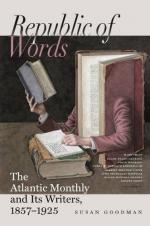Snow-scenes less exciting, but more wild and dreary, may be found in Alexander Henry’s Travels with the Indians, in the last century. In the winter of 1776, for instance, they wandered for many hundred miles over the farthest northwestern prairies, where scarcely a white man had before trodden. The snow lay from four to six feet deep. They went on snow-shoes, drawing their stores on sleds. The mercury was sometimes -32 deg.; no fire could keep them warm at night, and often they had no fire, being scarcely able to find wood enough to melt the snow for drink. They lay beneath buffalo-skins and the stripped bark of trees: a foot of snow sometimes fell on them before morning. The sun rose at half past nine and set at half past two. “The country was one uninterrupted plain, in many parts of which no wood nor even the smallest shrub was to be seen: a frozen, sea, of which the little coppices were the islands. That behind which we had encamped the night before soon sank in the horizon, and the eye had nothing left save only the sky and snow.” Fancy them encamped by night, seeking shelter in a scanty grove from a wild tempest of snow; then suddenly charged upon by a herd of buffaloes, thronging in from all sides of the wood to take shelter likewise,—the dogs barking, the Indians firing, and still the bewildered beasts rushing madly in, blinded by the storm, fearing the guns within less than the fury without, crashing through the trees, trampling over the tents, and falling about in the deep and dreary snow! No other writer has ever given us the full desolation of Indian winter-life. Whole families, Henry said, frequently perished together in such storms. No wonder that the Aboriginal legends are full of “mighty Peboan, the Winter,” and of Kabibonokka a his lodge of snow-drifts.




